
Long-distance wave watching during sunset
Have you ever noticed how much you can observe when you look at water from a distance? For example in these pictures, you see the tracks of ships that are long out of sight! Do you see the circle that one obviously drove before leaving our field of view?
For the ships far out in the fjord, you can’t actually see the waves so much as the turbulence they created that left the surface smoother, thus better reflecting the light from the low sun (and appearing yellow-ish). And how cool how you see how newer tracks run over older ones! Only for the ferry in the bottom left you can actually see the waves themselves.
In the picture below we actually see the waves that both ferries made.
Zooming in: How cool does it look to have these waves almost all the way across the water? And do you see how they are bound by the ship’s V-shaped, feathery wake? I find it really fascinating that there are such large surface elevations, but only inside of the ship’s wake.
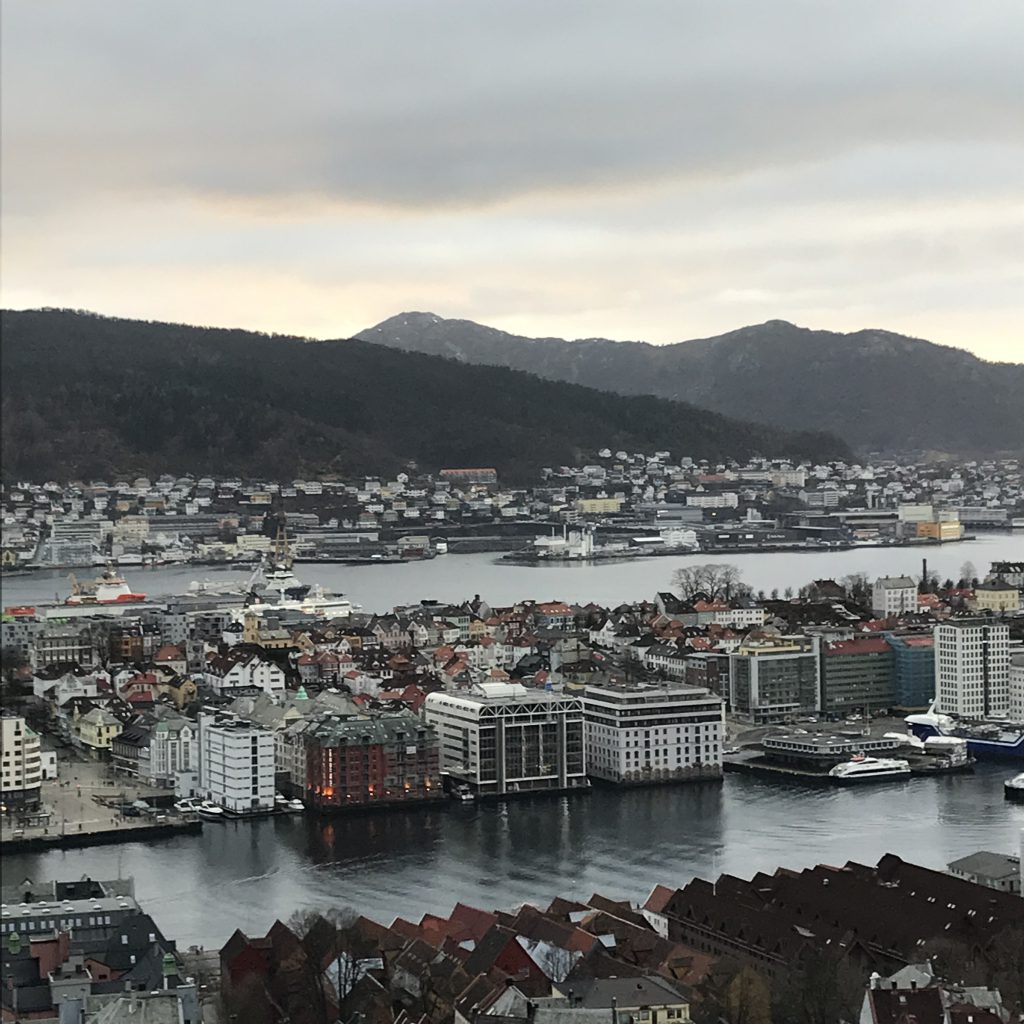 I just love wave watching, even when I am not even that close to the water :-)
I just love wave watching, even when I am not even that close to the water :-)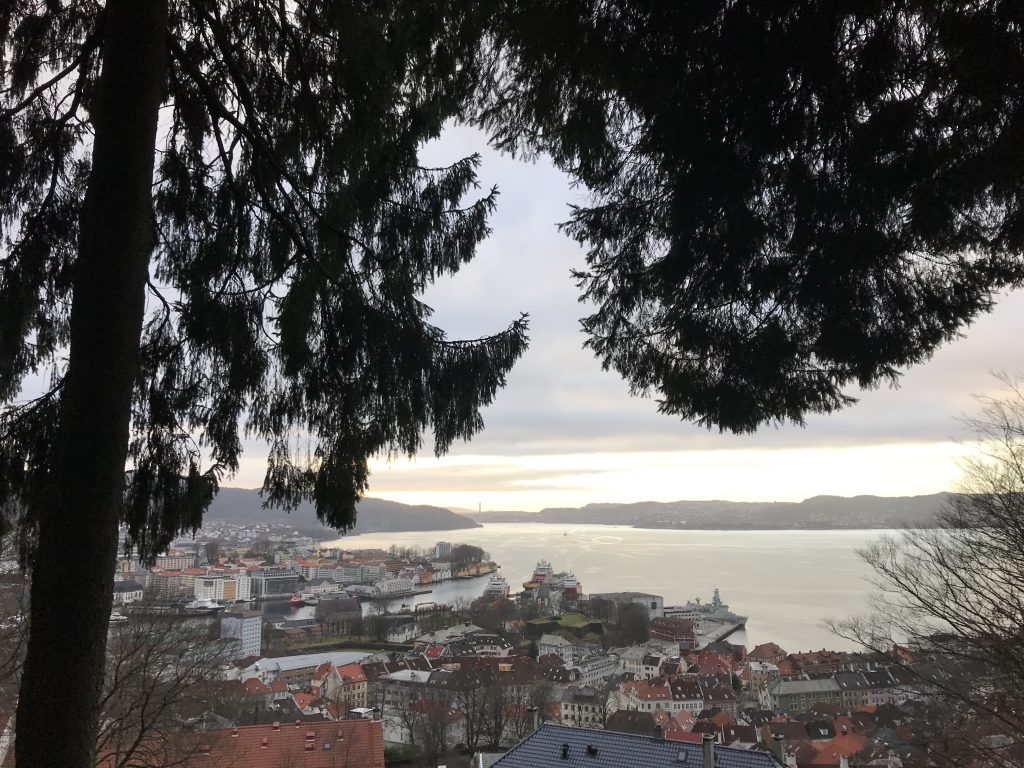
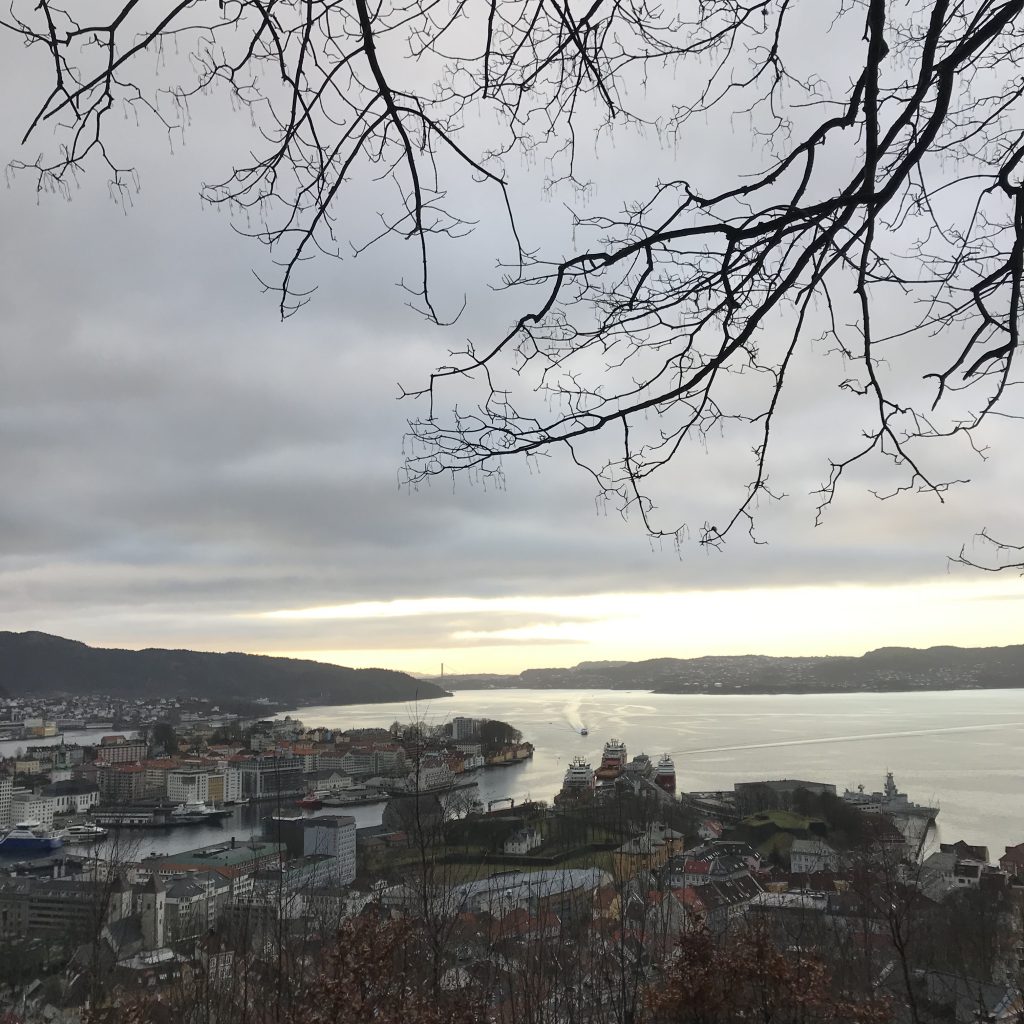
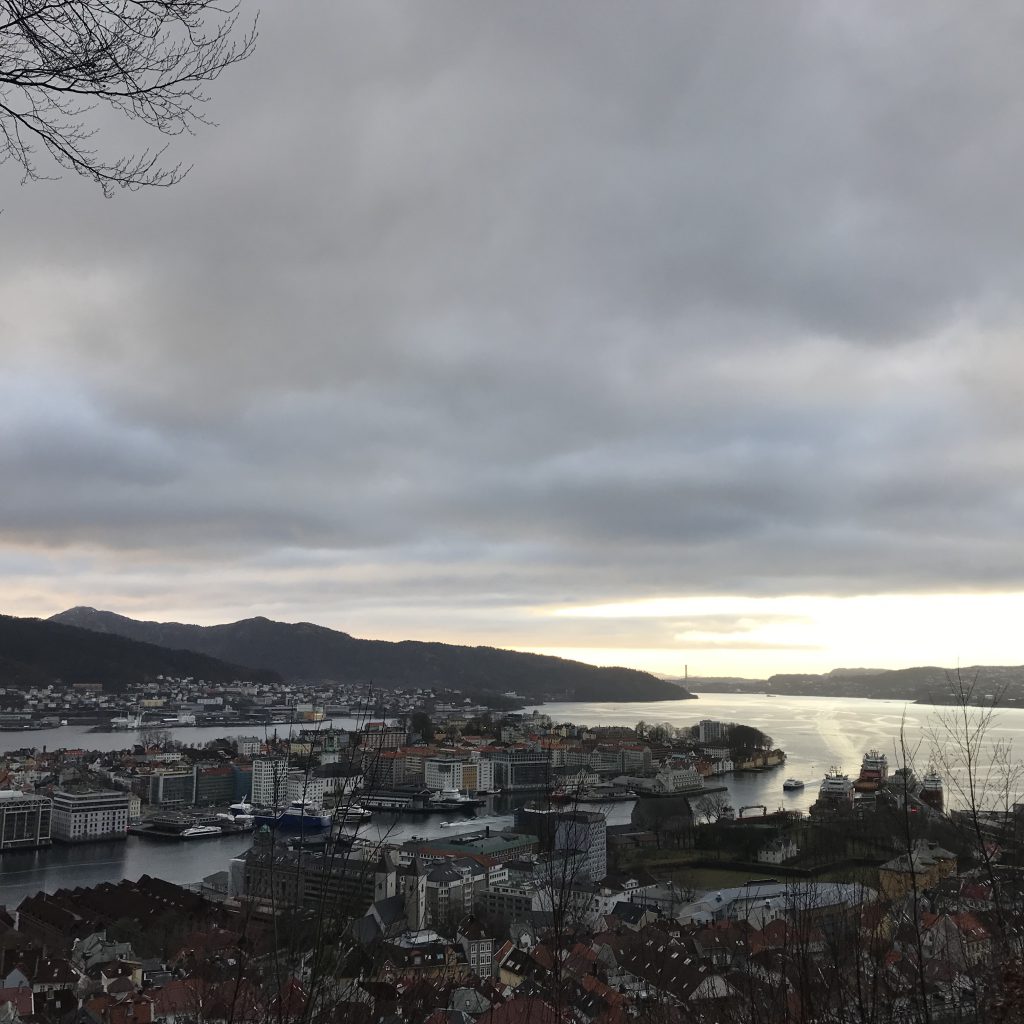
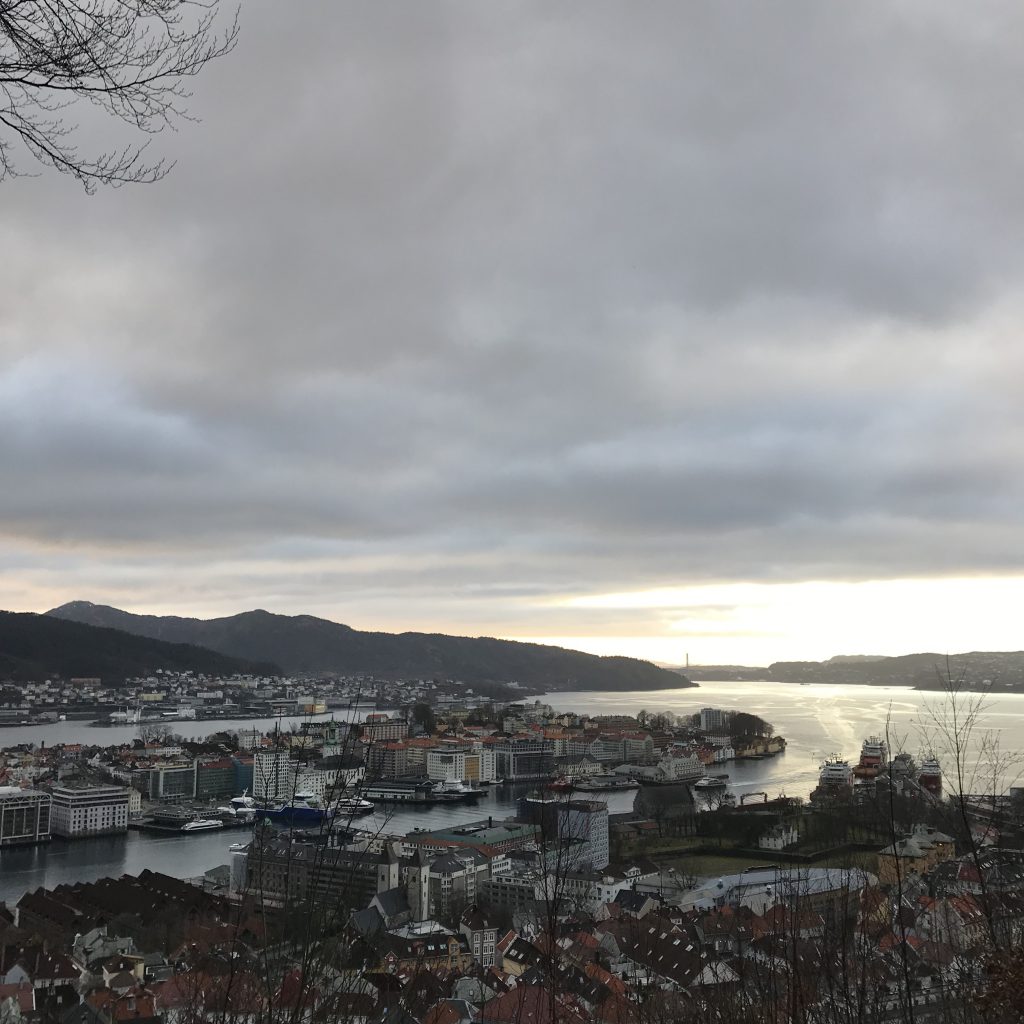
Joe Buchanan says:
I have often looked at an area of ocean and wondered about all the different textures and patterns. But why does turbulence leave a smoother surface? I can imagine that upwelling basically washes away the surface chop, but why does smoothness apparently persist for so long? I would have thought that it would vanish at the speed of surface waves encroaching on the smooth areas – but these wake traces look as if they persist much longer.
Mirjam says:
I think it’s pretty much what you describe: Upwelling washing away surface chop. But then the upwelling is happening for a long time even long after the ship has sailed. If you look at the turbulent wake of ships from a close distance, you can watch upwelling cells persisting for quite a long time. The water in the turbulent wake continues to be moving and swirling and behaving differently from the stagnant water around it. And that “different” behaviour leads to a different surface roughness, which then reflects the light differently and thus looks smoother. I think. Does this make any sense at all?
Mirjam says:
Check out my new blog post for more #wakewatching and some more explanations, too :-)